42 difference between yield to maturity and coupon rate
Yield to Maturity vs. Coupon Rate: What's the Difference? - Investopedia The yield to maturity is the estimated annual rate of return for a bond assuming that the investor holds the asset until its maturity date and reinvests the payments at the same rate. 1... Difference between YTM and Coupon Rates A YTM, or yield-to-maturity, reflects the annual return an investor would receive if they held a bond until it matures. A coupon rate is the percentage of the face value of a bond that is paid out as interest to investors on a yearly basis. The higher the coupon rate, the more money investors will earn on their investment.
What is the difference between the term structure of interest rates... The yield to maturity (YTM) and the coupon rate are two critical factors that investors should examine when thinking about purchasing bonds. Bonds of investment-quality are low-risk investments that typically provide a return that is just a little bit higher than that of a typical savings account. ... Difference between yield curve and term ...
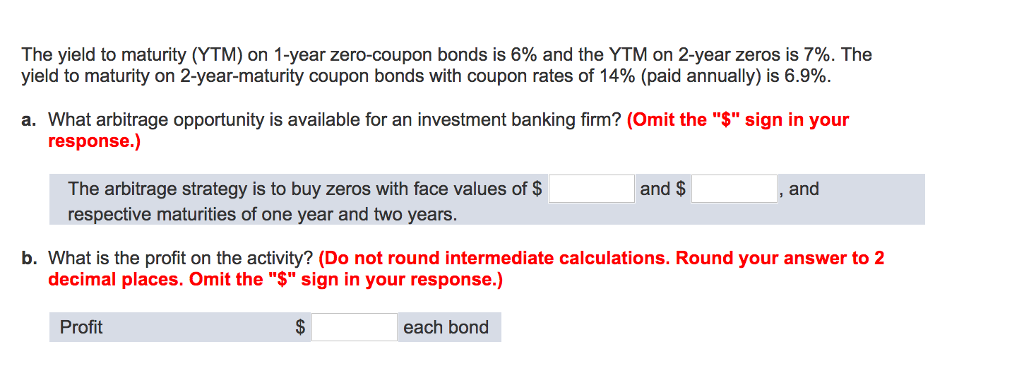
Difference between yield to maturity and coupon rate
Difference Between Yield to Maturity and Coupon Rate The key difference between yield to maturity and coupon rate is that yield to maturity is the rate of return estimated on a bond if it is held until the maturity date, whereas coupon rate is the amount of annual interest earned by the bondholder, which is expressed as a percentage of the nominal value of the bond. CONTENTS 1. Indian Railway Finance Corporation Limited - Bond Price, Yield ... Yield to maturity (YTM) is the overall interest rate earned by an investor who buys a bond at the market price and holds it until maturity. Mathematically, it is the discount rate at which the sum of all future cash flows (from coupons and principal repayment) equals the price of the bond. Bond Yield Rate vs. Coupon Rate: What's the Difference? - Investopedia The current yield compares the coupon rate to the current market price of the bond. 2 Therefore, if a $1,000 bond with a 6% coupon rate sells for $1,000, then the current yield is also 6%....
Difference between yield to maturity and coupon rate. What is the difference between the present value of the settlement ... What is the difference between the present value of the settlement ... ... 12. What Is the Difference Between Coupon Rate and Yield-To-Maturity ... Yield-to-maturity (YTM), as the name states, is the rate of return that the investor/bondholder will receive, assuming the bond is held until maturity. YTM accounts for various factors like coupon rate, bond prices, and time remaining until maturity, as well as, difference between the face value and price. CFA Level 1: Smart Tips & 110 Page Workbook To Pass CFA L1 Valuing a Bond using Spot Rates; Difference Between Spot Rates and YTM; Problem with Modified Duration: Ignores Convexity of the Price to Yield Curve; The Relationship Between Short-Term Forward Rates and Spot Rates; Lego Block Method to Calculate a Forward Rate using Spot Rates - Example # 1; Lego Block Method to Calculate a Forward Rate using ... Coupon vs Yield | Top 8 Useful Differences (with Infographics) - EDUCBA Let us discuss some of the major Difference Between Coupon vs Yield: The coupon rate of a bond is the amount of interest that is actually paid on the principal amount of the bond (at par). While yield to maturity defines that it's an investment that is held till the maturity date and the rate of return it will generate at the maturity date.
Current Yield vs. Yield to Maturity: What's the Difference? Yield to maturity is a way to compare bonds with different market prices, coupon rates, and maturities. Formula The current yield of a bond is easily calculated by dividing the coupon payment by the price. For example, a bond with a market price of $7,000 that pays $70 per year would have a current yield of 7%. 3 Important Differences Between Coupon and Yield to Maturity - The Balance Yield to maturity will be equal to coupon rate if an investor purchases the bond at par value (the original price). If you plan on buying a new-issue bond and holding it to maturity, you only need to pay attention to the coupon rate. If you bought a bond at a discount, however, the yield to maturity will be higher than the coupon rate. Yield to Maturity vs. Yield to Call: The Difference - Investopedia A bond's yield is the total return that the buyer will receive between the time the bond is purchased and the date the bond reaches its maturity. For example, a city might issue bonds that pay a ... Difference Between Coupon Rate And Yield Of Maturity - Nirmal Bang The major difference between coupon rate and yield of maturity is that coupon rate has fixed bond tenure throughout the year. However, in the case of the yield of maturity, it changes depending on several factors like remaining years till maturity and the current price at which the bond is being traded. Here's another example that clearly ...
Coupon vs Yield | Top 5 Differences (with Infographics) - WallStreetMojo Yield to maturity is the effective rate of return of a bond at a particular point in time. On the basis of the coupon from the earlier example, suppose the annual coupon of the bond is $40. And the price of the bond is $1150, then the yield on the bond will be 3.5%. Coupon vs. Yield Infographic Difference Between Yield & Coupon Rate The higher the rate of coupon bonds, the higher the yield rate. 4.The average coupon rate gathered in a number of years determines the yield rate. 5.Aside from the coupon rate, yield is also influenced by price, the number of years remaining till maturity, and the difference between its face value and current price. Understanding Coupon Rate and Yield to Maturity of Bonds The Yield to Maturity is a rate of return that assumes that the buyer of the bond will hold the security until its maturity date and incorporates the rise or fall of market interest rates. This will be a bit technical. ... Coupon Rate: Maturity Date: Coupon Frequency: YTM: Face Value: Clean Price: Market Value: RTB 03-11: 2.375%: 3/9/2024: 4: 2 ... Yield to Maturity vs Coupon Rate: What's the Difference While the coupon rate determines annual interest earnings, the yield to maturity determines how much you'll make back in interest throughout the bond's lifespan. The YTM considers market changes because, even though your bond's interest rate will not change, its value will fluctuate depending on the market's rates.
Difference Between Coupon Rate and Yield to Maturity The main difference between Coupon Rate and Yield to Maturity (YTM) is that Coupon Rate is the fixed sum of money that a person has to pay at face value. In contrast, Yield to Maturity (YTM) is the amount a person will retrieve after the maturation of their bonds. The Coupon Rate is said to be the same throughout the bond tenure year.
Yield To Maturity explained| Bonds and Debentures | Difference between ... When investing in bonds we come across different terms like face value, coupon rate,maturity, yield to maturity etc. In this video I have tried to simplify Y...
Bond Yield Rate vs. Coupon Rate: What's the Difference? - Investopedia The current yield compares the coupon rate to the current market price of the bond. 2 Therefore, if a $1,000 bond with a 6% coupon rate sells for $1,000, then the current yield is also 6%....
Indian Railway Finance Corporation Limited - Bond Price, Yield ... Yield to maturity (YTM) is the overall interest rate earned by an investor who buys a bond at the market price and holds it until maturity. Mathematically, it is the discount rate at which the sum of all future cash flows (from coupons and principal repayment) equals the price of the bond.
Difference Between Yield to Maturity and Coupon Rate The key difference between yield to maturity and coupon rate is that yield to maturity is the rate of return estimated on a bond if it is held until the maturity date, whereas coupon rate is the amount of annual interest earned by the bondholder, which is expressed as a percentage of the nominal value of the bond. CONTENTS 1.



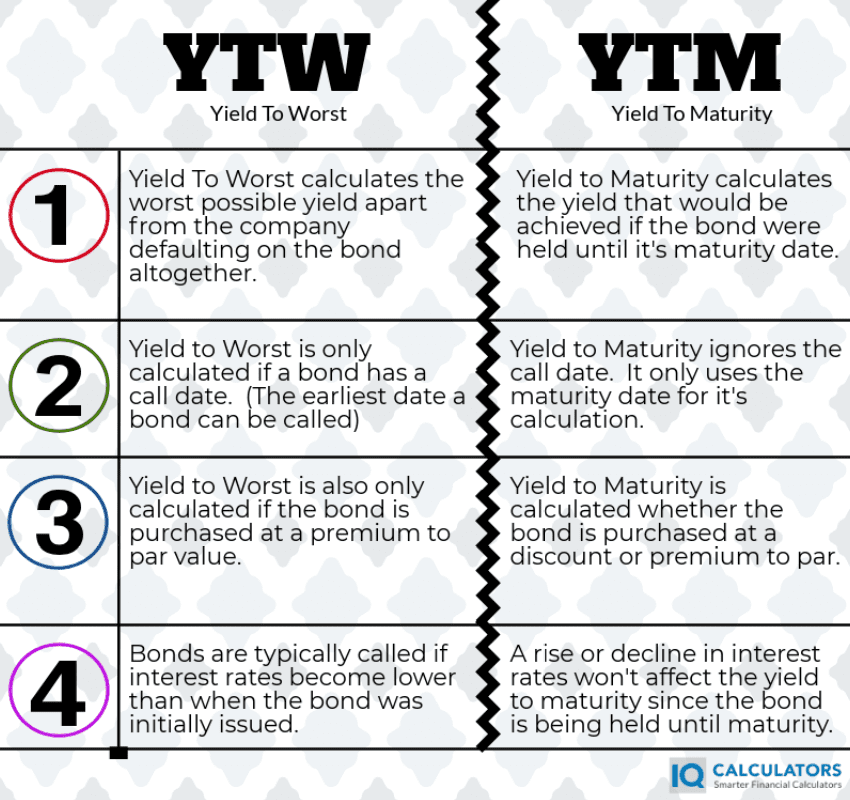
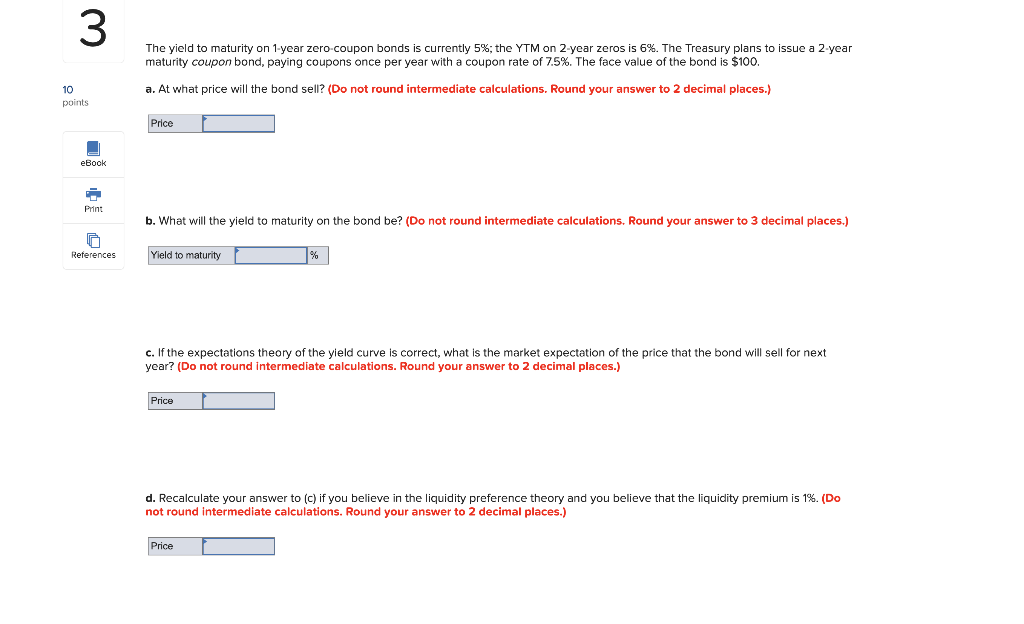





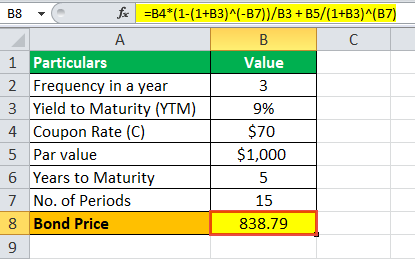
:max_bytes(150000):strip_icc()/shutterstock_112522391-5bfc2b9846e0fb0051bde2d3.jpg)


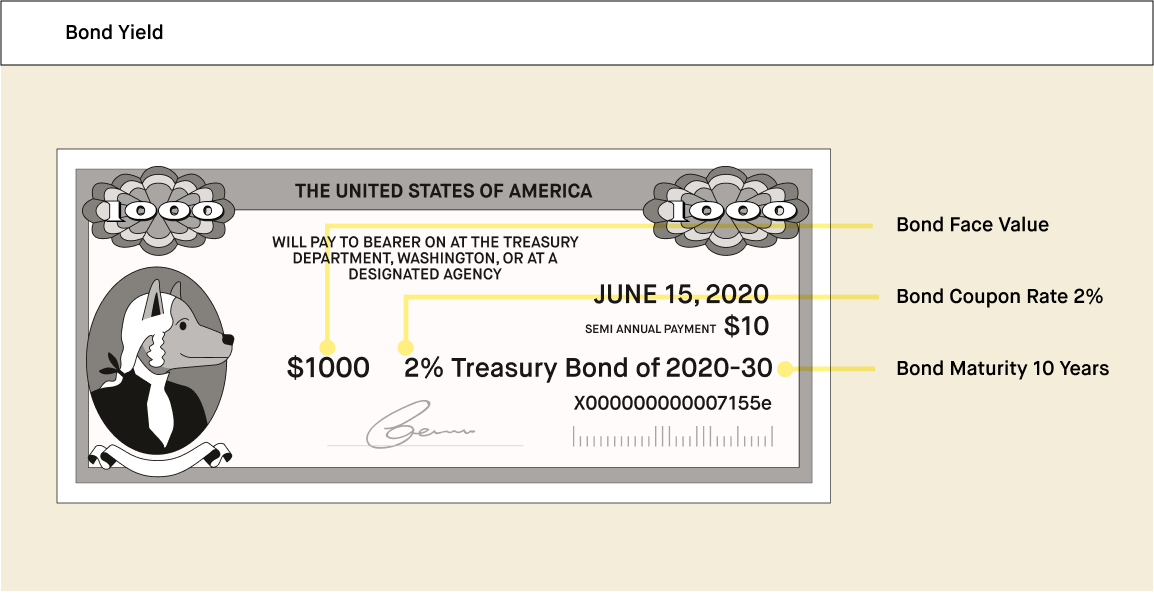









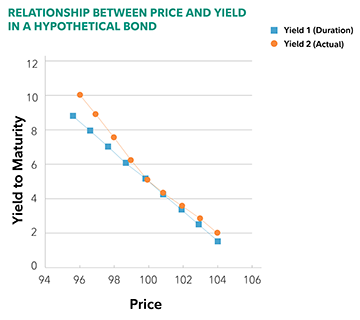



:max_bytes(150000):strip_icc()/female-executive-talking-to-colleagues-117455512-5750d4d75f9b5892e8b3d3af.jpg)
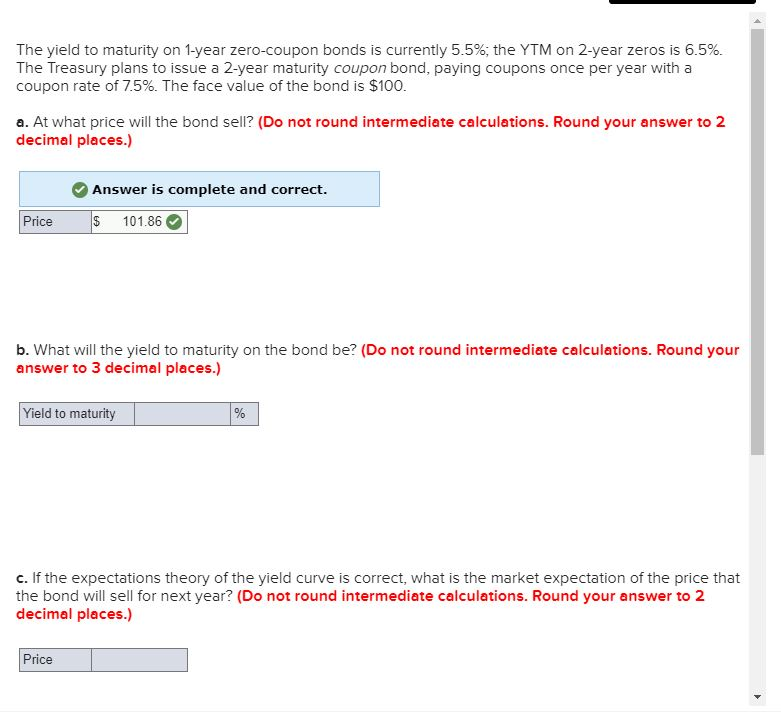
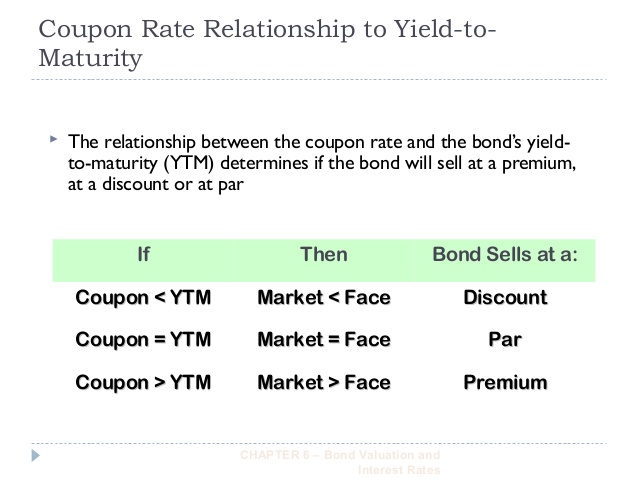
:max_bytes(150000):strip_icc()/terms_b_bond-yield_FINAL-3ab7b1c73e8b487a9e860f0a5ca6dd6b.jpg)

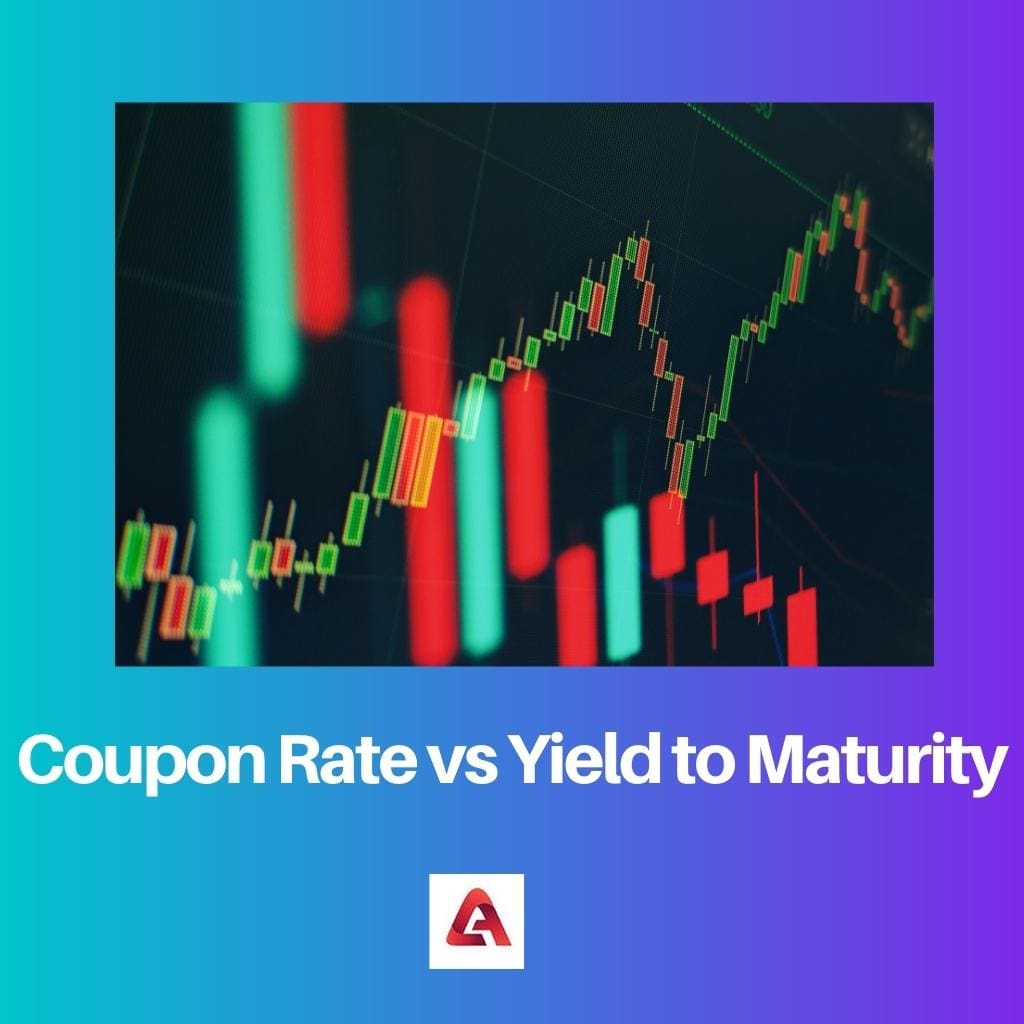
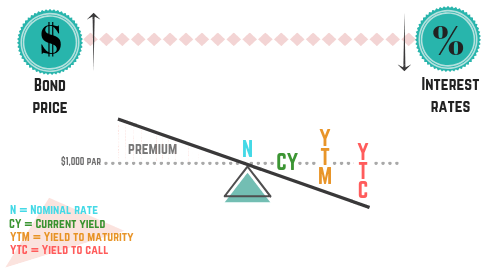
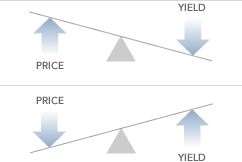

Post a Comment for "42 difference between yield to maturity and coupon rate"